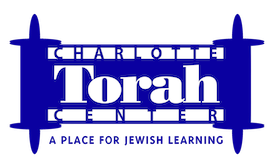| The last mitzvah in the Torah is that every one of us should write—or commission someone to write—a Torah scroll to be used to learn from and serve as the primary text Jewish people should be taught. You might disagree with the Torah but you can’t deny that it is the source of everything Jewish and all the gifts we have given to the world. Setting aside one day a week to detach from business and other mundane activities, love your neighbor, fair courts in which rich and poor are equal in the eyes of judges, and being kind to a stranger, are just a few of the many lessons and values found in a Torah scroll. As such, it has been the primary text for Jews for the past 3400 years. And now, write for yourselves this song, and teach it to the Children of Israel. Place it into their mouths, in order that this song will be for Me as a witness for the children of Israel. (31:19) Why is the Torah referred to as a song? England’s former chief Rabbi, Dr. Jonathan Sacks writes, If we are to hand on our faith and way of life to the next generation, it must sing. Torah must be affective, not just cognitive. It must speak to our emotions… Song is central to the Judaic experience. We do not pray; we daven, meaning we sing the words we direct toward heaven. Nor do we read the Torah. Instead, we chant it, each word with its own cantillation. Even rabbinical texts are never merely studies; we chant them with the particular sing-song known to all students of Talmud. Each time and text has its specific melodies. The same prayer may be sung to half-a-dozen different tunes depending on whether it is part of the morning, afternoon or evening service, and whether the day is a weekday, a Sabbath, a festival or one of the High Holy Days. There are different cantillations [symbols] for biblical readings, depending on whether the text comes from Torah, the prophets, or the Ketuvim, ‘the writings’. Music is the map of the Jewish spirit, and each spiritual experience has its own distinctive melodic landscape… Music speaks to something deeper than the mind. If we are to make Torah new in every generation, we have to find ways of singing its song a new way. The words never change, but the music does. (Covenant and Conversation 5775) Jews who find Torah dry or irrelevant have tragically never been exposed to its song. But there’s another aspect. The verse above implies that we should not only teach it, we should “place it in their mouths.” What is the difference between teaching and placing the material “in their mouths?” The Talmud (Eruvim 54b) says that real teaching is only accomplished when the student grasps the content—but even that’s not enough. “Placing it in their mouths” means that the student grasp and retain the material so well that it can be related articulately with ease. If the student stumbles when trying to explain its content, it’s an indication the teacher has not completed their job.The Talmud relates a story about how this requirement was once fulfilled in an extreme way. Rabbi Preida had a student to whom he had to teach the same material 400 times before the student grasped it. One day Rabbi Preida informed his student that he would be leaving earlier than usual in order to take care of an important matter. Although Rabbi Preida still managed to teach him the day’s lesson 400 times, the student failed to understand.”What happened?” asked Rabbi Preida? The student replied, “Ever since you told me you would be leaving early, I kept thinking you were about to leave and I could not concentrate.””Set your mind to your study,” said Rabbi Preida, “and I will teach you another 400 times.” The Talmud praises Rabbi Preida’s patience and commitment to his student, but some commentators ask, shouldn’t the praise be for the student’s dedication? The answer is that the student would never have been able to sit through so many sessions if not for the creativity and presentation of his teacher. When the student didn’t understand, Rabbi Preida would choose a different approach—until he finally arrived at one that spoke to the student. I heard the following story about Rav Simcha Wasserman (1900-1992), a great Rabbi I had the good fortune of meeting a few times. He had studied in the elite Lithuanian Talmudic academies (yeshivot) between WW I and WW II. When he came to America, he was asked to be the first instructor at a new yeshiva in Spring Valley, NY that would train teachers. Years later he related to a student, from whom I heard the story, that the boys did not understand his classes. He realized he needed to change the “music.” He began teaching in different ways but was still not able to get through until finally, after the tenth attempt, his students grasped the material. A great teacher is one who doesn’t blame his students’ lack of understanding but, rather, sees it as his obligation to get through to them. The Torah’s lyrics have not changed but the music sometimes does. We are a week away from Rosh Hashanah, a day some Jews find themselves in the synagogue. Some pray for their lives and the lives of those they love, while others use the day as a way of staying connected to their Jewish roots. Some get nothing from the day, others say it’s a special time. The key is the melody; what aspect of the song are you willing to learn? If you come into Rosh Hashanah singing, you will finish realizing that you have gotten the melody of your Judaism. Good ShabbosShana Tova—May you have a happy and healthy New Year. |

